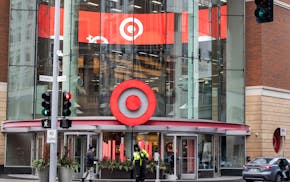Today is the most important day of the year for your wallet. For America's seniors and especially those in Minnesota, the second-most important day will be Oct. 1.
The Federal Reserve's policymakers this afternoon are expected to begin lowering interest rates, and the only mystery is whether they will start with a quarter-point or half-point reduction. I want a half-point because, as I wrote in July, the economies of Minnesota and the Midwest have slowed more than the rest of the country.
Either way, it's the first reduction in the cost of money with more expected over the next year. This will stimulate the economy, boost consumer confidence and lift the stock market. "Inflation depressed sentiment, mortgage rates went to 7 percent, a lot of things. That's going to change," Jim Paulsen, the longtime Minneapolis-based investment strategist who is blogging in retirement, said on CNBC yesterday.
For hundreds of thousands of older Minnesotans, today's good vibes will be tested in less than two weeks, when the nation's big insurers on Oct. 1 announce their Medicare Advantage programs for 2025.
The business is being roiled this year in ways unseen since its formation in 2003.
Insurers are adjusting to an update to the government's Medicare reimbursement model, which in 2025 will be in the second of a three-year phase-in. The resulting pressure may lead them to reduce their Medicare Advantage offerings. Most will make tweaks to benefits and incentives, though some may no longer offer plans outright in certain locations.
"It's important to pay attention every year, but I do think that consumers should take an extra look this year just given that there might be more changes to plans than we've seen in the last couple of years," said Sonja Pedersen-Green, associate partner at McKinsey & Co. in Minneapolis and co-author of a sweeping report on the future of Medicare Advantage.
Also forcing change, surveys show nearly half of the nation's health care systems may drop one or more Medicare Advantage plans. Those systems say insurers are squeezing them by delaying authorization for health procedures, then fighting payments or denying them outright.
In Minnesota, we've seen announcements from HealthPartners, Essentia Health and Sanford Health in recent weeks that they will drop certain Medicare Advantage plans from its networks.
As a result of those decisions, tens of thousands of Minnesotans will have to choose either a new insurer or new care provider during the insurance renewal period from Nov. 1 to Dec. 7.
One out of six Minnesotans is enrolled in Medicare. And nearly 60% of them are enrolled in a Medicare Advantage plan, one of the highest adoption rates for those plans in the nation.
Medicare Advantage plans took off in the early 2010s after the Affordable Care Act created incentives for improved care quality, setting up a rating system and offering greater rebates to insurers with higher-rated plans. Last year, nationwide enrollment in Medicare Advantage eclipsed traditional Medicare, or as I recently heard it called "LBJ Medicare" for the president who started it.
Traditional Medicare users can go to almost any doctor or hospital anywhere. Medicare Advantage patients are steered to doctors within their plan's network for non-emergency care, and they get other benefits.
New financial pressure on Medicare Advantage emerged last year when the Centers for Medicare & Medicaid Services (CMS) began the transition to a reimbursement model that would lower government payouts to insurers.
As well, CMS is trying to crack down on overpayments to insurers. One of the main problems is called upcoding, in which insurers add illness or disease codes, or change the diagnosis outright, to receive bigger payments.
The Wall Street Journal in July reported that Medicare paid insurers about $50 billion for diagnoses that were added by insurers to Medicare Advantage participants during the three years ending in 2021. For reference, Medicare Advantage costs the government around $450 billion a year.
Minnetonka-based UnitedHealth Group, parent of the nation's largest health insurer and market-share leader in Medicare Advantage, is at the center of all these cross currents.
Just after getting through the disruptions caused by the pandemic, a strategic focus for UnitedHealth this year has been adjusting to lower payments from Medicare. The company is spending about 84 cents on every premium dollar it gets from Medicare Advantage this year, up from 82.6 cents last year.
UnitedHealth has threatened in recent years to cut back on Medicare Advantage offerings, though instead routinely expanded them. A company spokesman told me it had no comment on its 2025 plans until the big reveal on Oct. 1.
Medicare costs are assessed down to the county level, which has historically led insurers to offer Medicare Advantage plans in urban areas more than rural ones.
When the new plans are announced Oct. 1, Pedersen-Green of McKinsey said, "There will likely continue to be places where [insurers] are placing additional bets, still trying to target growth. It's going to vary quite a bit by specific county."

Ramstad: Gov. Walz, things are not getting done in Minnesota

Ramstad: AI is English-centric, but it's picking up Hmong quickly

Ramstad: Minneapolis' Camden neighborhood is rising. Houston White wants to keep it that way.

Ramstad: Minnesota's big businesses are in crisis with a common problem


